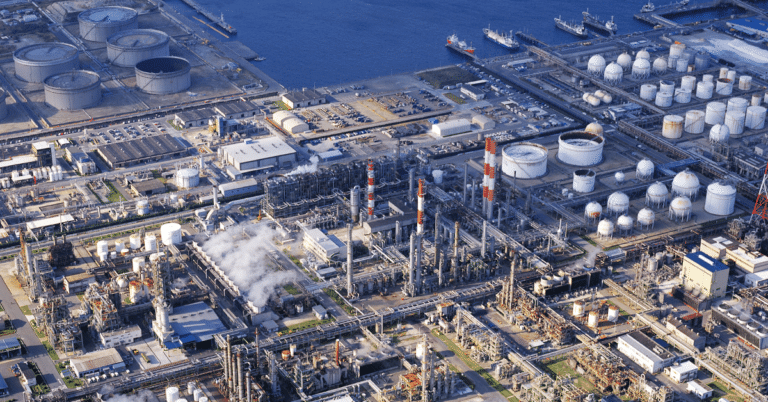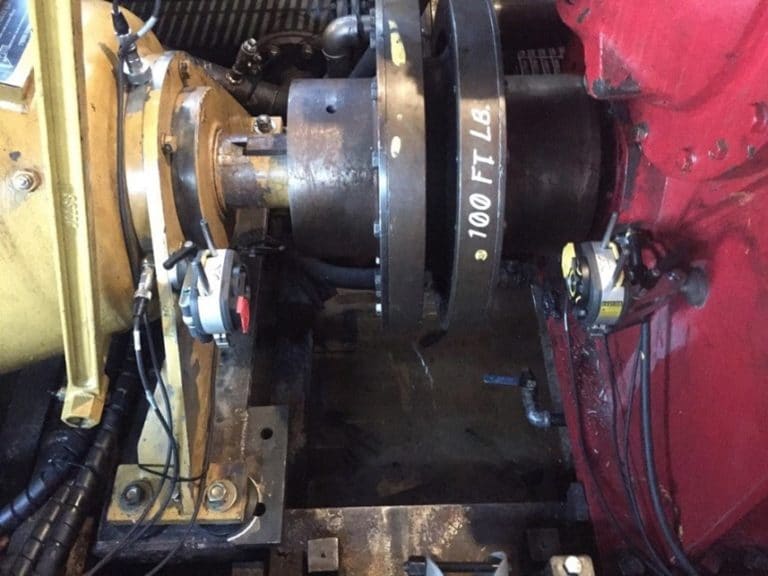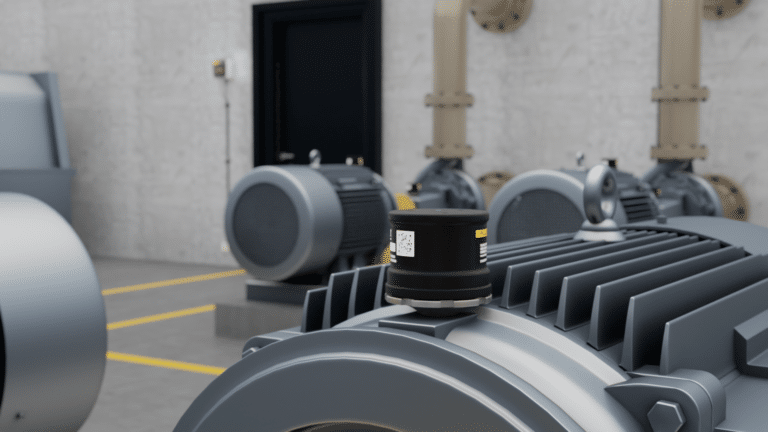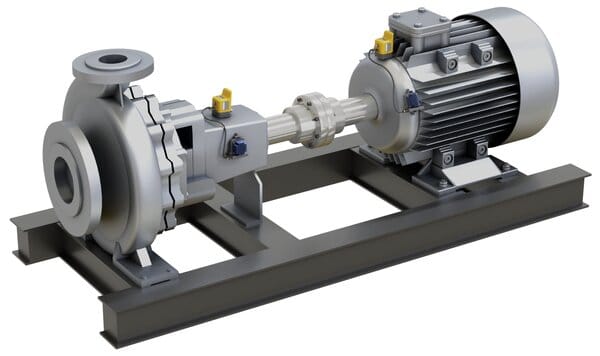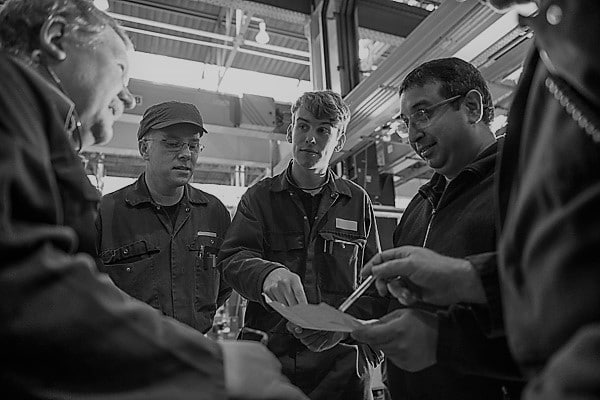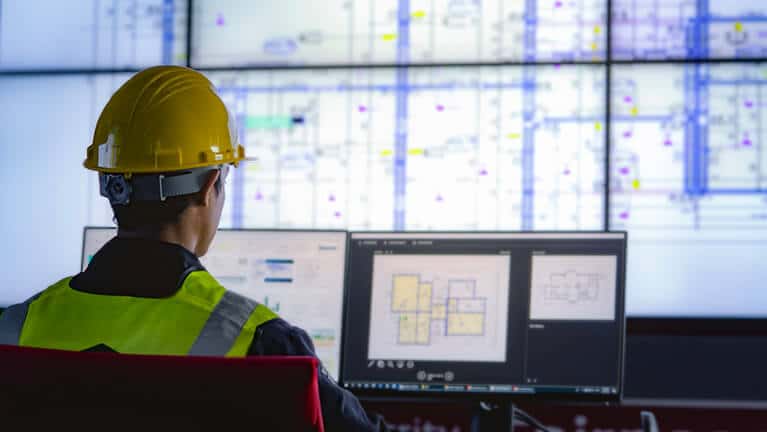
Streamlining production is vital to the overall success of industrial manufacturing plants.
Many machines involved in production are geared to work 24/7 without interruption in theory. In reality, unexpected downtime happens, and operations teams work hard to keep them as brief and infrequent as possible. Different approaches and maintenance strategies exist to help prevent and mitigate unplanned downtime, but not all of them are applicable for every machine — or entirely successful at improving uptime.
Some of the most successful teams use condition-based maintenance to continuously analyze a combination of machine health parameters at critical points in the production process. This strategy involves gathering data with condition monitoring (CM).
Many plants use a combination of maintenance strategies across their asset inventory. They do so to balance the intensiveness of monitoring and measurement with the criticality of the machine and the corresponding process.
Here is a breakdown of four common strategies, followed by a detailed look at wired condition monitoring.
Four Maintenance Strategies Deployed Today
- Breakdown maintenance. This simple strategy follows the pattern of “use it until it breaks without intervention.” The only advantage of this maintenance strategy is that no investments are required to extend a machine’s lifetime. The disadvantages are unplanned failures, resources, and labor costs under the 24/7 model, large stock for spare parts, and more prolonged interruptions to production processes to investigate incidents. Interestingly, breakdown maintenance can be sustained to the site’s advantage for “replaceable” machine types if the machine is monitored and impending failure is recognized in time to plan the replacement.
- Preventive maintenance. Also known as time-based maintenance, preventive maintenance includes scheduled stops and promises fewer machine failures. But the disadvantages still prevail: Too many avoidable repairs occur, and parts are replaced before their true end of life, increasing costs. Significant failures can still happen under a time-based maintenance strategy, either because service intervals aren’t correctly calibrated to machine lifecycles, or an inability to spot a quickly progressing issue or the inevitable random event.
- Predictive maintenance. This strategy involves scheduling maintenance stops according to machine condition and not by a scheduled or periodical intervention. Predictive maintenance allows the team to utilize the full lifespan of machine components and reduces the spare parts inventory, as the majority of repairs are planned. With advanced failure detection, repairs are made before more extensive damage occurs, and unplanned downtime occurs much less often. The only real disadvantage of this maintenance strategy is the experience and time investment required to inspect the machines and interpret the findings.
- Condition-based maintenance. With a condition-based maintenance strategy, the team uses condition monitoring to measure various parameters or health indicators on critical machines and watches for changing trends. If vibration values, for example, are the same as usual, the machine’s health most probably is stable, and no further actions are required. But if vibration levels increase and measurement values exceed alarm limits or thresholds, the team should intervene with further inspection and analysis to determine the root cause. After a problem diagnosis, the team can monitor that machine more closely while a repair is scheduled to avoid damage.
Collecting Condition Monitoring Measurements
The full spectrum of reliability-centered maintenance uses five or more measurement modalities to assess machine condition: oil analysis, ultrasound, vibration, thermography, and motor testing. Plant personnel can collect data manually using portable inspection tools, or they can automate parts of the data collection using wired connections. Many plants use both practices in combination.
Wired condition monitoring systems, also referred to as online condition monitoring, generally include sensors mounted on machines, a connection method (cable or wireless), and software for data analysis. The sensors collect machine condition data, and the software provides varying levels of alarming, trending, and visuals to support further investigation. Some systems even provide recommended next steps. Different levels of online CM systems may suit different types of machinery, depending on the condition requirements. A pump or fan can be covered by a simple online CM system, whereas more complex machines with variable speeds and loads, for example, require more sophisticated monitoring.
Why Wired Condition Monitoring Systems?
Production-critical machines often require a specialized monitoring approach. One of the essential advantages of an online CM system is that it is continually collecting data and looking for changes. An online CM system can quickly detect small variations and, if limits are exceeded, notify the team. If the failure condition is evolving quickly and damage is potentially near, an online CM system that samples health indicators within minutes or hours will be much more efficient than committing a person to monitor the machine in person. Likewise, tracking the accessibility of measurement points or variations in the process is much more feasible for teams using an online CM system than manual measurement methods.
Critical Machine Example: Vertical Roller Mills
Vertical roller mills (VRM) are a classic example of a production-critical machine. If this machine stops operating without warning, it disrupts the rest of the production process. If one of two available VRMs in a plant ceases operation, it cuts productivity in half. Add to that, many industries are trending toward fewer, larger machines.
The cement industry, for example, now often uses one large mill instead of two VRMs operating in parallel. Typical VRM problems include gearbox failures such as gear mesh issues, broken teeth, and bearing problems. If those problems are caught early, parts can be ordered. Certain replacement parts can be kept in stock, but not the gearbox; it’s too expensive. If the gearbox fails, all production stops and the delivery of a replacement could take half a year.
The bottom line: you require a wired CM system designed to identify the specific machine’s failure modes. It will collect VRM data on process signals, temperature vibration, and, potentially, torque measurements.
Supplementing Machine Specialists with Condition Monitoring
Remote condition monitoring and data warehousing add value to in-house machine specialists, who are likely stretched thin and carry the responsibility of 24/7 uptime.
Some facilities lack sufficient personnel to maintain a robust predictive program. Others suffer a temporary lack of skills when their senior person leaves the predictive maintenance team or the company. Part of the response in either situation could be remote monitoring, though you shouldn’t expect to absorb 100% of the need with online condition monitoring system measurements.
Online monitoring services also are available, with external experts monitoring data and providing guidance, training, and reporting.
Smart Dataflow Architecture
A condition monitoring system has two data flows: the data acquired from sensors and other inputs to the system, and the communication between the system and its users, via notifications, email, and other connections.
A wired online CM system has its own configurable IP address, which turns the system into a network element to be configured inside the plant via Ethernet and the user. Wireless systems typically connect on-premises or via the public cloud.
Once the condition monitoring system is configured, it will work independently as an automated diagnostic “robot.” The system collects and sends measurement data via Ethernet or wireless to the software platform, which adds it to the measurement database. Data from SCADA systems or parameters accepted from a PLC can often be integrated into the condition monitoring system architecture. For a multi-site scenario, measurement data can be routed to a remote (and centralized) database that automatically recognizes the “sender” and sorts measurements to the appropriate measurement location and measurement task.
Multiple users can access this database to view measurement results, analyze data, compile reports, and so on. Some teams may choose to share machine condition data and reports with the original equipment manufacturer, as well, especially during the warranty period.
Condition Monitoring: An Essential Tactic for Industrial Maintenance Managers
For production-critical machines, reasons abound to add condition monitoring to the overall reliability maintenance strategy.
Some aspects of a condition monitoring system may even prove to be simpler than starting a regular predictive maintenance program since data management is already incorporated. That said, nothing replaces the expertise of machine specialists and their knowledge of failure modes.
The return on investment (ROI) for a CM system usually is achieved the first time it detects a failure indicator – which would otherwise have required more hours to identify, or if undetected, lead to an unscheduled maintenance intervention and production loss.
Condition monitoring systems are cost-effective and reliable tools for monitoring the health of production critical assets and increasing production availability in plants.

